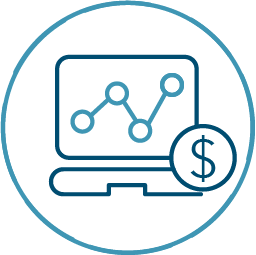Credit Management Learning Pathway
The key to a healthy business is knowing how to better manage your credit policies and cash flow. By establishing a robust and effective process of granting credit to your customers, our credit management series ensures that you are well-equipped with the right strategies and best approaches to mitigate credit risks, exercise greater credit vigilance and manage potential late payments or defaults from our business partners.
Credit Management Learning Pathway
 Effective Credit Analysis and Management
Effective Credit Analysis and Management
Re-look into credit fundamentals to do a deep dive analysis.
This course is designed to enable participants to understand the fundamental concepts in credit management and analysis. Learn to apply practical credit evaluation techniques to mitigate risks for various companies (case studies can also be done for specific industries participants are working in).
 Effective Credit Analysis and Management
Effective Credit Analysis and ManagementRe-look into credit fundamentals to do a deep dive analysis.
This course is designed to enable participants to understand the fundamental concepts in credit management and analysis. Learn to apply practical credit evaluation techniques to mitigate risks for various companies (case studies can also be done for specific industries participants are working in).
Key Learning Points
- Learn the techniques of conducting effective credit analysis
- Understand the sources and reasons for financing
- Understand the Cash Conversion Cycle, Asset Quality and Liabilities
- Learn to examine financial statements and perform forensic investigation on unaudited financial statements
- Understand Cashflow Analysis and apply methods of cashflow preparation
- Apply Financial Ratios (Profitability, Solvency, Liquidity, Asset Management Ratios) to assess a company’s financial position
- Understand Business Failures
- Develop sound credit principles
- Learn about the legal aspects of credit control and management
 Credit Monitoring and Control in Times of Uncertainties
Credit Monitoring and Control in Times of Uncertainties
The profits of a company are made not just from sales.
Profits also come from the ability to minimize costs and prevent unnecessary losses, such as bad debts written off. Ironically, it can happen that the more a company sells, the less it makes. This occurs when companies fail to exercise proper credit monitoring and detect any red flags or signs of distress from their portfolio of customers and business partners.
 Credit Monitoring and Control in Times of Uncertainties
Credit Monitoring and Control in Times of UncertaintiesThe profits of a company are made not just from sales.
Profits also come from the ability to minimize costs and prevent unnecessary losses, such as bad debts written off. Ironically, it can happen that the more a company sells, the less it makes. This occurs when companies fail to exercise proper credit monitoring and detect any red flags or signs of distress from their portfolio of customers and business partners.
Key Learning Points
- Understand the Credit Monitoring Process
- Learn how to identify problem accounts, the causes of problem accounts and business failures
- Apply the tools and frameworks for monitoring adverse environmental and market changes
- Identify the tell-tale signs of customers in financial distress
- Learn how to reorganize, recapitalize, refinance and restructure
- Develop an action plan for credit monitoring and following up on problem accounts
 Effective Debt Recovery Strategies and Practical Debt Collection
Effective Debt Recovery Strategies and Practical Debt Collection
A sale is not considered real revenue until the money has been collected from client.
As a business owner, improving your Accounts Receivable (AR) turnover should be a priority as cashflow is one of the most cited reasons that businesses of all sizes fail.
Implementing a robust process to monitor and collect AR is thus vital for ensuring the viability and profitability of a business. This workshop aims to equip participants with practical skills in managing accounts receivables effectively, which would be critical ensuring that the company stays on the right track of profitability.
 Effective Debt Recovery Strategies and Practical Debt Collection
Effective Debt Recovery Strategies and Practical Debt CollectionA sale is not considered real revenue until the money has been collected from client.
As a business owner, improving your Accounts Receivable (AR) turnover should be a priority as cashflow is one of the most cited reasons that businesses of all sizes fail.
Implementing a robust process to monitor and collect AR is thus vital for ensuring the viability and profitability of a business. This workshop aims to equip participants with practical skills in managing accounts receivables effectively, which would be critical ensuring that the company stays on the right track of profitability.
Key Learning Points
- Understand how to manage receivables and its impact on business operations
- Appreciate the importance of Accounts Receivable (AR) management to maintain a strong cashflow position
- Learn how to perform credit maintenance and implement a robust process of monitoring and collecting Accounts Receivable
- Establish policies around Accounts Receivable to improve sales and prompt payments
- Identify and segment customer accounts for AR management
- Establish a DSO goal to manage cashflow
- Understand the Debt collections process
- Apply telephone techniques in collecting debts
- Understand legal options for debt recovery
 Advanced Credit Analysis
Advanced Credit Analysis
A structured approach to understand and develop core competencies in risk analysis for client.
Advanced Credit Analysis offers enhanced skill development on current best practices and high impact risk analysis techniques to arm experienced managers to refine tools for credit management.
This programme provides you with advanced knowledge and skills that will sharpen your understanding of accounting risks and analysis of business financial statements.
 Advanced Credit Analysis
Advanced Credit Analysis A structured approach to understand and develop core competencies in risk analysis for client.
Advanced Credit Analysis offers enhanced skill development on current best practices and high impact risk analysis techniques to arm experienced managers to refine tools for credit management.
This programme provides you with advanced knowledge and skills that will sharpen your understanding of accounting risks and analysis of business financial statements.
Key Learning Points
- Understand the Credit Monitoring Process
- Learn how to identify problem accounts, the causes of problem accounts and business failures
- Apply the tools and frameworks for monitoring adverse environmental and market changes
- Identify the tell-tale signs of customers in financial distress
- Learn how to reorganize, recapitalize, refinance and restructure
- Develop an action plan for credit monitoring and following up on problem accounts
 Credit Recommendation
Credit Recommendation
Perform sound and evidence-based credit recommendation.
Credit professionals are often overwhelmed by a deluge of credit applications and lack a basic understanding of the justifications behind recommending a certain credit limit to prospective customers and business partners. This credit recommendation course will help accelerate the credit approval process through sound justification of the recommended credit.
 Credit Recommendation
Credit RecommendationPerform sound and evidence-based credit recommendation.
Credit professionals are often overwhelmed by a deluge of credit applications and lack a basic understanding of the justifications behind recommending a certain credit limit to prospective customers and business partners. This credit recommendation course will help accelerate the credit approval process through sound justification of the recommended credit.
Key Learning Points
- Understand the Credit Monitoring Process
- Learn how to identify problem accounts, the causes of problem accounts and business failures
- Apply the tools and frameworks for monitoring adverse environmental and market changes
- Identify the tell-tale signs of customers in financial distress
- Learn how to reorganize, recapitalize, refinance and restructure
- Develop an action plan for credit monitoring and following up on problem accounts